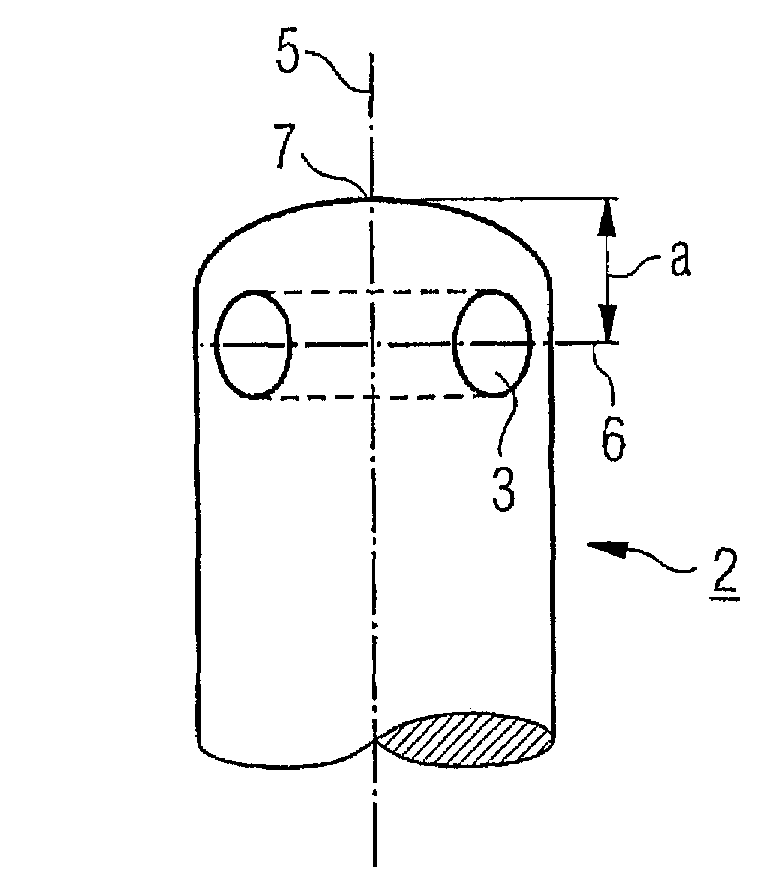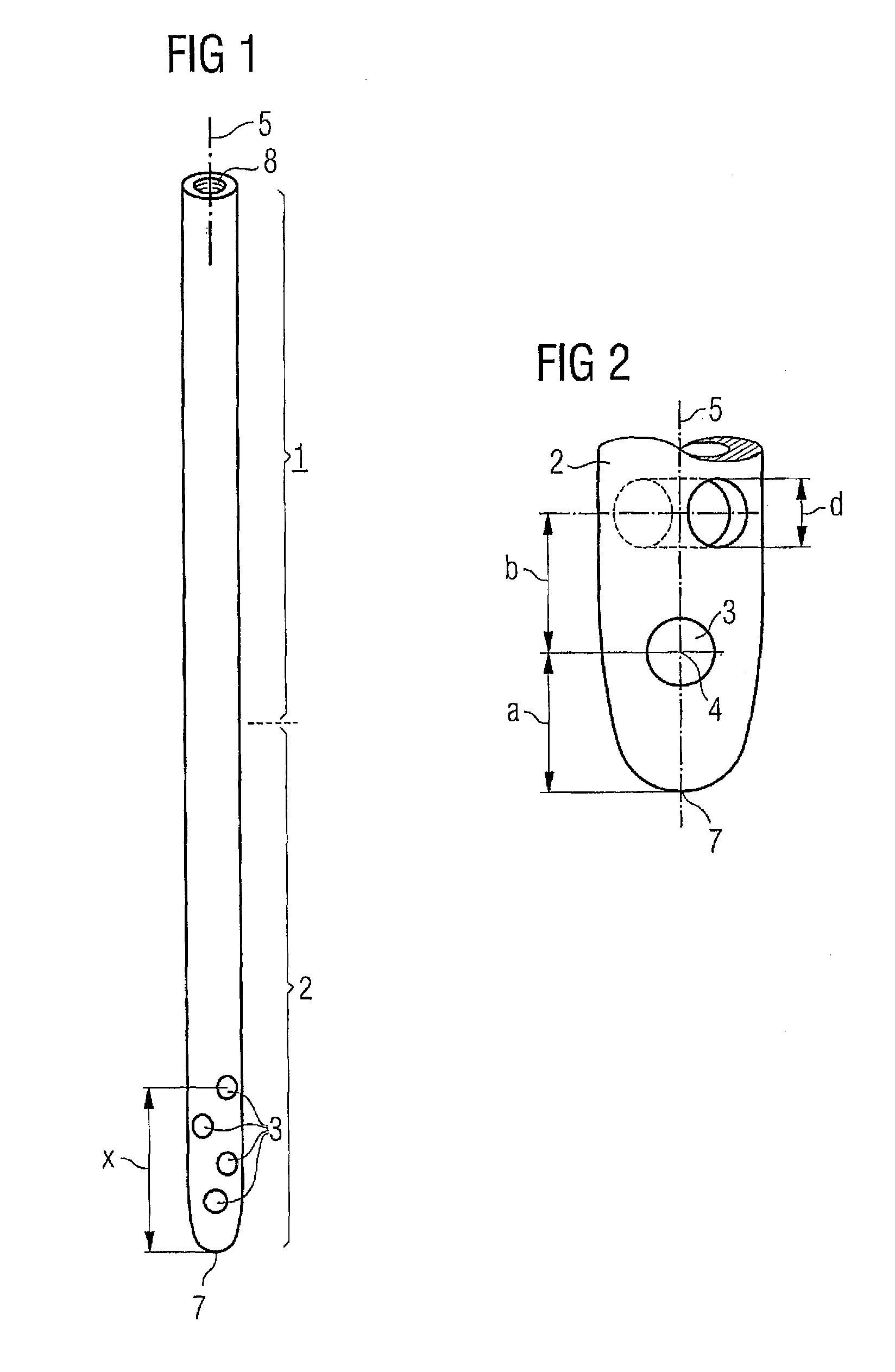Intramedullary nail
a technology of intramedullary nail and nail, which is applied in the field of intramedullary nail, can solve the problems of nail weakening effect, limited surgeon's choice of screw position, and hole in the bone surface being too close to one another, so as to reduce the propagation of cracks, avoid neurovascular structures, and secure bony fixation
- Summary
- Abstract
- Description
- Claims
- Application Information
AI Technical Summary
Benefits of technology
Problems solved by technology
Method used
Image
Examples
Embodiment Construction
[0038]FIG. 1 shows an intramedullary nail with a solid cross-section having a longitudinal axis 5. The longitudinal axis 5 may be curved along a portion of the nail if the nail itself is curved in that portion. The intramedullary nail further comprises a near end 1 with means 8 consisting of an internally threaded bore for coupling to an insertion device and a far end 2 with a tip 7 for insertion into the intramedullary canal of a long bone. The far end 2 is provided with four traversing through holes 3 with axes 6, all of said through holes 3 being grouped in said far end 2 within a distance x measured from said tip 7 to the axis 6 of the most distant hole 3 (as indicated by the arrow in FIG. 1).
[0039]The projection of the hole axis 6 of said through holes 3 in a plane orthogonal to said longitudinal axis5 (or if the hole axis 6—as shown in the figures—is lying already in an orthogonal plane, the hole axis itself) is such that at least two of said (projected) hole axes 6 are at an ...
PUM
 Login to View More
Login to View More Abstract
Description
Claims
Application Information
 Login to View More
Login to View More - R&D
- Intellectual Property
- Life Sciences
- Materials
- Tech Scout
- Unparalleled Data Quality
- Higher Quality Content
- 60% Fewer Hallucinations
Browse by: Latest US Patents, China's latest patents, Technical Efficacy Thesaurus, Application Domain, Technology Topic, Popular Technical Reports.
© 2025 PatSnap. All rights reserved.Legal|Privacy policy|Modern Slavery Act Transparency Statement|Sitemap|About US| Contact US: help@patsnap.com



